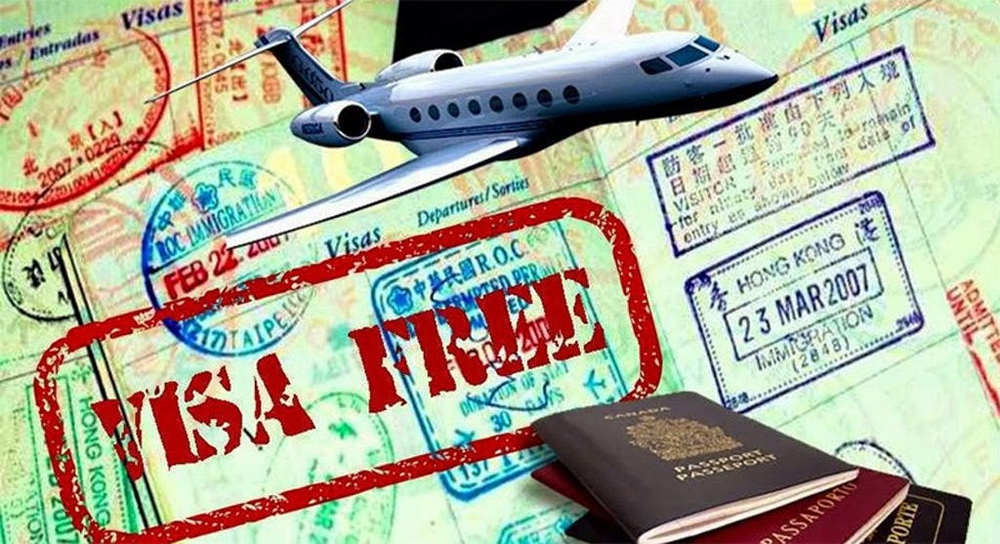Who does and who does not need an entry visa for Vietnam
Contributors are not employed, compensated or governed by TD, opinions and statements are from the contributor directly
 Travellers entering Vietnam need passports or valid passport-substitute papers and an entry visa issued by Vietnamese authorities except, of course, in cases where Vietnam visa exemption is granted.
Travellers entering Vietnam need passports or valid passport-substitute papers and an entry visa issued by Vietnamese authorities except, of course, in cases where Vietnam visa exemption is granted.
Visa exemption is, naturally, the mechanism a country has in place for foreign nationals to enter and stay, for a certain period of time, without having to complete the visa procedures and pay fees related to it.
Travellers exempt from Vietnam entry visas

- Spouses and children of Vietnamese citizens living overseas are exempt from entry visas for Vietnam along with a temporary residence duration of no more than six months for each entry, when carrying a valid passport, with one full year remaining and documents pertaining to visa exemption status.
The visa exemption period is up to five years and shorter than the expiry date of the passport or international travel document of the grantee for at least six months.
- Those exempt from Vietnam visa under bilateral and unilateral visa exemption agreements. Citizens of up to 24 countries are exempt from Vietnam visa. However, the duration and conditions for these are not the same. Click here for details about who does and who does not need a visa for Vietnam.
How to get a Vietnam visa

Those who are not subject to or do not qualify for visa exemption have to apply for a visa to enter the country. Currently, there are three ways to get a visa for Vietnam:
- Applying for the electronic visa (e-visa),
- Applying at Vietnam embassies,
- Applying for a visa on arrival.
Now, let’s learn the detailed procedure of each.
Applying for Vietnam e-visa

Foreigners entering Vietnam may apply for an e-visa in the following steps:
- Visit the electronic visa information page to submit electronic visa applications, photo uploads and personal identification pages in a standardised form.
- Receive the electronic file code and pay the visa fee to the account specified in the electronic visa information page.
- Within three working days from the date of fully receiving information on Vietnam visa applications and visa fees, the Exit and Entry Management Department (the Ministry of Public Security) shall consider, settle and reply the applicants at the electronic visa information page.
- Foreigners applying for the electronic visa must use the electronic dossier code to check whether they have been successful in their application at the electronic visa information page — the electronic dossier code is used for printing the visa.
However, not everybody who needs an entry visa can use the e-visa system. Countries included in the e-visa scheme include citizens from 46 countries including Argentina, Australia, Armenia, Azerbaijan, Belarus, Brunei, Bulgaria, Canada, China, Colombia, Cuba, Czech Republic, Denmark, Finland, France, Germany, Greece, Hungary, India, Ireland, Italy, Japan, Kazakhstan, Luxembourg, Mongolia, Myanmar, Netherlands, New Zealand, Norway, Panama, Peru, Philippines, Poland, Romania, Russia, Slovakia, South Korea, Spain, Sweden, Timor Leste, United Arab Emirates, United Kingdom, United States, Uruguay and Venezuela.

Applying at Vietnam embassies
Foreigners can apply for a Vietnam visa at the embassy for travelling from 1 month to up to 3 months. Vietnam visa for travelling is symbolised as DL to distinguish it with other types of visa. In order to apply for a tourist visa for foreigners in Vietnam, the following steps and procedures are required:
- Foreigners will need to go to the website of the Vietnam embassy that they wish to apply with and download the Vietnam visa application form.
- They then will need to print out the form, complete it, glue it with a photo and then sign it.
- They then need to submit the form together with the original passport and other required documents to the Vietnam embassy together with visa fee. The documents can be submitted by post or directly depending on the embassy.
- They then wait to take the passport with visa (normally 3-5 working days). The passport can be sent back via post or they need to get it directly at the embassy.
Apply for a Vietnam visa on arrival

To enter any country, the first thing is to apply for a visa of that country (except for visa exemptions). The visa application process often includes too many steps and quite time-consuming. Visa on arrival, also known as airport-based visa, is the best option for those who are away from the embassy or have unexpected visits without having enough time to apply for a visa as normal.
Vietnam visa on arrival allows you to obtain an entry visa at the airport upon arrival in Vietnam, provided that you have a visa approval letter applied online in advance. This visa procedure is very simple, which does not cost you time.
- Visit the website of the company providing the visa on arrival service to fill the application form. After that, you pay the service fee through your bank account.
- After two or three working days, you will receive the approval letter via the registered email.
- Print the approval letter and bring it along with your suitcases, take the plane to Vietnam as planned.
- At the airport, you submit the approval letter, passport, photos and pay the stamping fee. That’s it!
Vietnam visa on arrival is the most convenient way to apply for a Vietnam visa. You do not have to spend a lot of time to go to the embassy many times and especially, it is useful if you need a visa in a quick way.


Comments are closed.